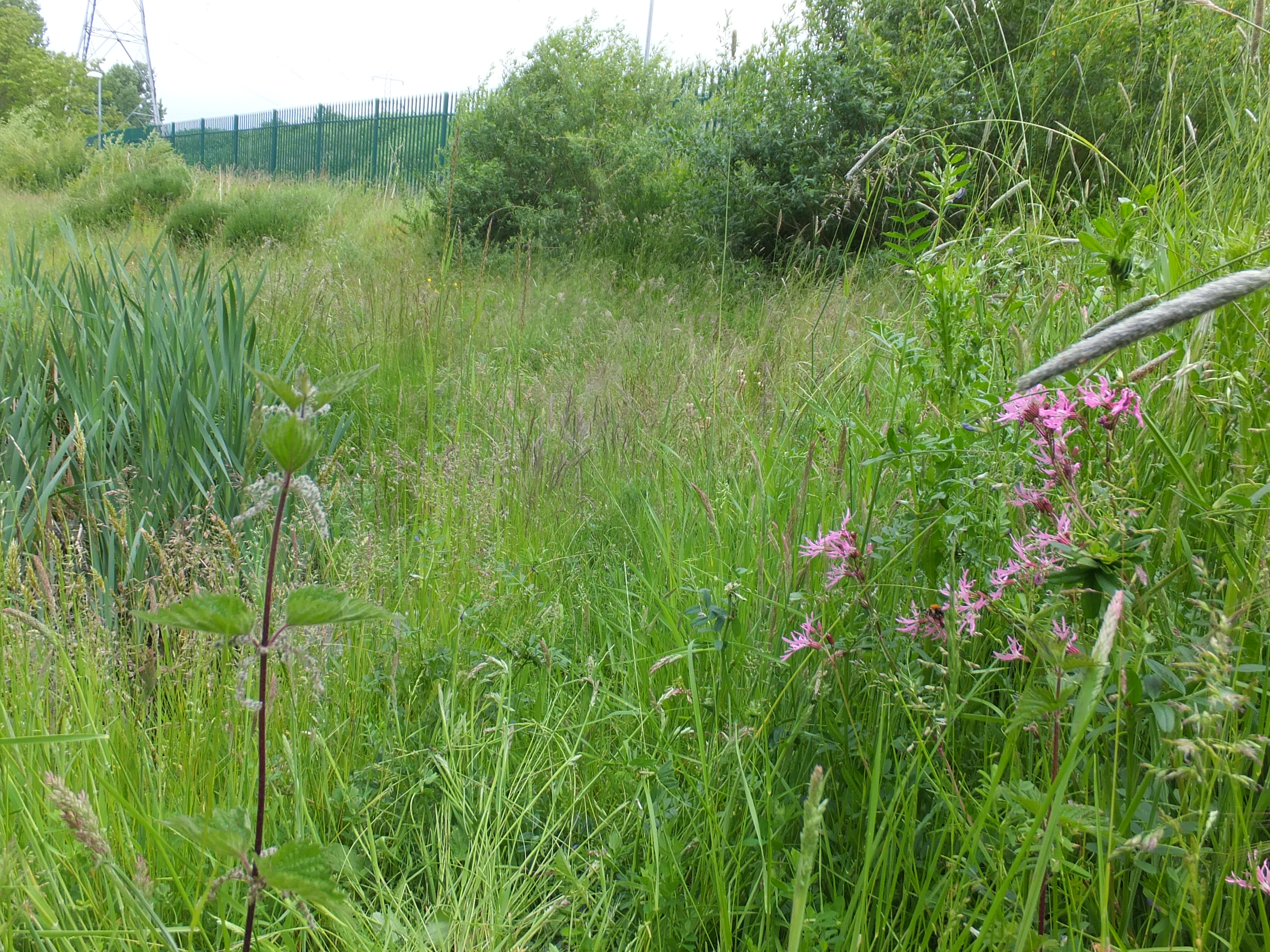Last Tuesday volunteers were out at Kimpton Balancing Pond and Buffer Strip to carry out a Phase 1 habitat survey. As it is reaching the summer months, survey season is now in full swing! Volunteers were lucky enough to get some excellent weather on Tuesday, which meant there was plenty of flora and fauna to spot at Kimpton.
Kimpton Balancing Pond and Buffer Strip is a small nature conservation site surrounded by the Kimpton Industrial Estate, and the site provides a valuable refuge and wildlife corridor for plants and animals in the area. The pond was created for flood management to hold surface water run-off from the industrial estate in heavy rains.
There are a variety of different habitats at Kimpton, including the balancing pond and a grassland meadow. As a result Kimpton is a great place to spot blue-tailed damselflies and large-red damselflies catching insects along the meander margin or warming up in the sun on plants, for instance. Common pipistrelles have also been recorded foraging for insects along the Pyl Brook, and the site is home to several butterfly species including speckled wood, small white, green-veined white and common blue.
On Tuesday volunteers were getting to grips with Phase 1 habitat surveys once again. Undertaking a Phase 1 habitat survey may sound really technical, but essentially it involves walking over a site and recording all the plant species present. It also involves mapping the site to highlight areas of interest or where conservation efforts can be targeted. These surveys provide us with a really good idea of what plant species are present on site and how the site changes over time, as the surveys are done over several years. And the best time to carry these kind of surveys is in the summer months, when deciduous and annual plant species are more easily identifiable.
Overall SNCV volunteers managed to identify and record around 70 different plant species at Kimpton, including the attractive flowering ragged robin, meadowsweet and celery-leaved buttercup. The species list that was recorded from Tuesday will then be put into a database and sent off to the Greenspace Information for Greater London (GiGL) later in the year. GiGL is London’s environmental records centre and they collate, manage and make detailed survey information available on London’s green spaces and nature reserves. Ultimately survey data gathered by volunteer groups such as the SNCV provide a really valuable resource for future conservation.

Large Skipper butterfly at Kimpton (Ochlodes sylvanus)
Eleanor Kirby-Green
SNCV Biodiversity Assistant









